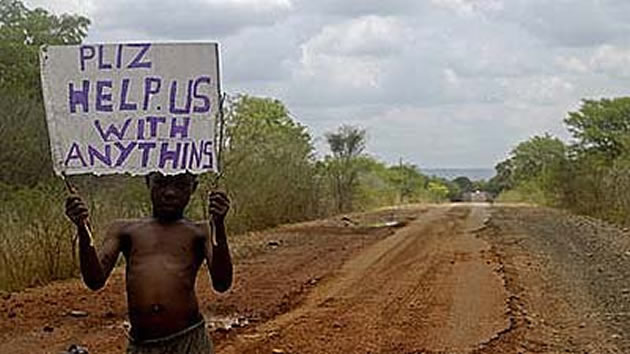EDITORIAL COMMENT: Mobilise more resources for Binga projects

 The BaTonga of Binga and Hwange in Matabeleland North, Gokwe North in the Midlands and Nyaminyami in Mashonaland West are sometimes called “basilwizi,” meaning “people of the great river.”
The BaTonga of Binga and Hwange in Matabeleland North, Gokwe North in the Midlands and Nyaminyami in Mashonaland West are sometimes called “basilwizi,” meaning “people of the great river.”
The name is derived from the fact that the BaTonga lived for centuries on the fertile lands on the banks of the Zambezi River. There, they grew crops on the floodplains of the great river, harvesting enough for household food security. They also fished freely in the river. Therefore, their lives were closely linked to the river hence the name “basilwizi”.
But in 1956, the government of the day forcibly moved them from their homes to make way for the Kariba Dam. It settled them in drier, rocky places away from the Zambezi. At their new homes they tend to live marginal lives.
They were made to leave their land for the good of the national economy, but some BaTonga elders, including chiefs, still have fond memories of their happy lives on the river banks. They complain that while they made way for dammed water, their new homes actually lack it. Unlike in the past when they fished in the river freely, now they have to seek government permits, which are not always given.
For them, it is a paradox that their homes are not served with reliable sources of water yet the Zambezi River and the dam isn’t very far away. In many of our conversations with chiefs in Binga, they always demand special water rights that recognise the BaTonga history and their old relationship with the Zambezi.
A number of advocacy groups have been formed to press for the water rights, among others. Basilwizi Trust is probably the most prominent. “The existence of Basilwizi Trust is a demonstration of concern and determination by Zambezi Valley communities to demand and restore their dignity taken away from them by the displacement from the Zambezi River banks. Poverty, the main cause of vulnerability to food insecurity, is one of the defining features of the Zambezi valley. The Zambezi Valley districts rank least on the Zimbabwe development index and yet they have great potential to be better from the vast natural resources found in the region,” says the trust.
But the BaTonga and the country at large should be pleased with the work that is being spearheaded by the First Lady, Cde Grace Mugabe, to help them realise greater food security through agriculture and more meaningful access to the Zambezi water.
In August, she visited Binga and pledged to ensure that the Bulawayo Kraal Irrigation Scheme is revived. The facility has potential to reach 15,000 hectares. However, work had since the 2006 launch of the Zambezi Green Valley project of which the Bulawayo Kraal is part, not gone beyond deployment of pipes and machinery, some of which was vandalised.
For a dry place like Binga, the only hope is irrigated agriculture. For this reason, we want to urge the First Lady to intensify work for the Bulawayo Kraal to succeed. Water is available from the Zambezi and the land is already identified. What the people of Binga expect is for the irrigation scheme, one of the country’s largest community projects, to take off now and create job opportunities for them, provide food security, fight poverty and drive general social development of their district. In addition, a successful Bulawayo Kraal diversifies Binga’s economy and reduces its dangerous and degrading dependence on donors. If Binga rises, the effect would be felt nationally.
We quoted the Minister of State for Provincial Affairs for Matabeleland North; Ambassador Cain Mathema on Monday saying about 100ha has been cleared at the Bulawayo Kraal ahead of planting this forthcoming summer agricultural season.
“Things are going well at all irrigation schemes and we will be commissioning some of them. At Bulawayo Kraal, we have already cleared 100ha in preparation for the planting season,” he said.
This is commendable progress given that the First Lady only made the commitment on the scheme on August 13. We hope that the speed with which work has moved in less than two months would be accelerated as time goes on.
One hundred hectares is decent progress in less than two months. The cleared section is part of the 250ha targeted for the first phase of the project and $1,8 million is required for that.
More resources are required over the next few years to ensure that all the 15,000 hectares are cultivated.
It is revealing that of the five operational irrigation schemes in Binga District, only one draws its water from the Zambezi. Tyabala, Nabusenga, Nzovunde and Lungwalala irrigation schemes are watered by dams. Mlibizi Irrigation Scheme that is supported by the Zambezi River Authority is the only one that draws from the great river. Bulawayo Kraal would be the second.
This situation tells us that not much of the Zambezi River water is used for agricultural purposes with respect to Binga. People in the district expect an improvement in that area. Bulawayo Kraal would contribute most significantly to that.
But for that to happen, much money, machinery and other resources have to be mobilised. That is a challenge for the government, the First Lady herself given her passion for the success of the project and the people of Binga themselves.










Comments